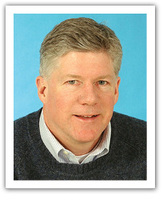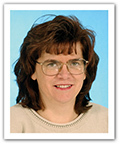| |
|


|
From Brian's Desk
The first question our staff asks during an acquisitions meeting is this: Does this book make a contribution? That question comes before we ask if the project will be profitable, and it’s followed by many related questions:
- Does it compete with an existing Human Kinetics title?
- Will it increase the knowledge in existing resources?
- Is the author a highly regarded expert on the topic?
- Will it enhance our publishing credibility?
Answering those questions has been part of our acquisitions process since Human Kinetics was founded by Rainer Martens nearly 40 years ago. It’s a disciplined and rigorous process that has enabled HK to remain the leading source of information across the sport and physic…
|
|

|
Bradley Cardinal
Bradley Cardinal and Hyo Lee recently published an article in Measurement in Physical Education and Exercise Science (volume 17, issue 1, pp. 74–87) in which they identified leading contributors to the Research Consortium’s annual program for the past 20 years. Human Kinetics authors make up 6 of the top 20 spots for high-visibility researchers based on frequency of research abstract publication between 1992 and 2011. Thanks to Weimo Zhu (1), Catherine Ennis (tied at 11), Minsoo Kang (14), Charles Corbin and Michale Horvat (tied at 18), and Steven
|
|
|
|

|
Division Direction
For the past 18 years, Human Kinetics has provided management services to a number of associations in the physical activity field. The services include hosting websites, managing membership, running conferences, hosting webinars, and even helping associations get started from scratch. Association management wasn’t even a term that we were familiar with when we started providing these services—it was just something HK’s cofounder and president Rainer Martens thought HK could do to give back to the field. Many of the members of the associations we were working with were HK authors, contributors, or journal editors. The organizations they were involved in expressed a need for assistance, and the expertise already existed within various departments at HK (technology, marketing…
|
|

|
News From Around HK
On August 22, Human Kinetics shared some exciting news. You may have seen the press release on our website and in other communications, but I want to share it again here. We’re very excited about the partnership of Human Kinetics and DSWFitness.
Champaign, IL—Human Kinetics has acquired DSWFitness, Inc., Center for Continuing Education, joining the forces of two widely respected information leaders in the fitness industry.
The move will combine the resources and products of Human Kinetics, known globally for its wide range of products in the physical activity and health fields, with DSWFitness, a 33-year veteran and leader of continuing education products for health and fitness professionals.
The acquis…
|
|

|
Tips For A Successful Publishing Experience
Contract negotiation. For many people, that activity ranks right up there with going to the dentist or being summoned for jury duty. The feeling of unease might be associated with an unpleasant experience from the past, or it might come from anxiety about possible confrontation with a perceived adversary. But like each of the analogous activities noted here, the anticipation is usually worse than the experience itself. In fact, early discussions with your acquisitions editor and attention to a few key concepts will lead to a worry-free and mutually rewarding experience.
Visions and Expectations
I’ve negotiated hundreds of publishing agreements with authors, editors, literary agents, and others. Not every experience was smooth sailing, but the majority of them h…
|
|

|
Sidebar
The summer of 2013 has brought a few changes for the staff at Human Kinetics. Here’s what’s been happening:
Big Move
After 12 years of a split campus, between the main building and a smaller office building known as HK West, all Human Kinetics USA office employees are back under one roof. Thirty-two people were still being housed in the HK West building, but the overall project involved the moving of over 200 employees and took three months to complete.
Facilities manager Jill Wikgren started the project by completing a feasibility study to make sure everyone could fit into the main building. She then worked with company vice presidents and division managers to determine the best placement of each department in terms …
|
|
|
|